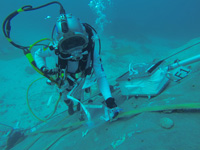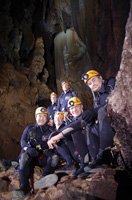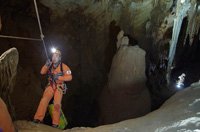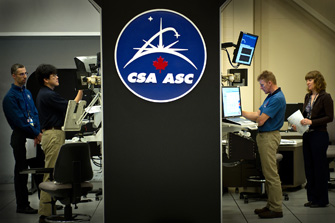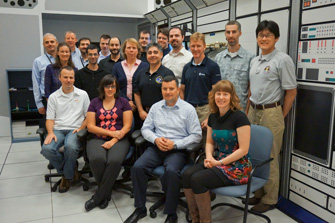Hello everyone. I always talk a lot about Russia in my journal but this time I am going to talk about my training in America.
In September, I did Routine Ops Sim training for the first time. This training is for everyday activities on the ISS.
It was conducted together with the American astronauts with whom I will actually spend time on the ISS.
On the ISS, a general meeting is held every morning through communications links with the control centers in each country. Prior to this, files summarizing essential information for the implementation of that day’s work, essential information for dealing with emergency situations, questions for the crew and responses to questions from the crew are sent from the ground.
This time, the training started with getting up in the morning, reading this information and starting the preparation for the day. As soon as I checked these files, I realised they contained questions for me so I came up with answers in preparation for the general meeting. At the meeting, there was a run-through of the day in general and an explanation of points to note and once everyone’s questions were answered, we immediately got on with the day’s work at hand.
Me and my fellow astronaut, Kjell, were both undergoing this type of training for the first time so tasks created in order to check the basics of items management were implemented. We were given situations that could occur at any time such as: ‘When I went t to eat my breakfast, I realised that there was no more XX.’ ‘When I tried to throw away some rubbish, the rubbish bag was full.’ ‘I tried using the calculator but it was broken. What should I do?’, and we solved them one by one. After that, we continued with comparatively simple work such as tool inventory checks and moving work stations.
Me: ‘Maybe it’s because it’s my first time doing this training that the tasks aren’t too complicated?’
I was just thinking this when...all of a sudden, the training came to a head!
The air in the ISS is continuously circulated in order to maintain air quality and humidity is controlled at the same time. The tasks of checking the quality of the water that results from this humidity control and moving it to a separate tank fell to me. This work is not particularly complicated in itself but it is essential to conduct these operations having read and understood the procedures well. First of all, I start by gathering together the necessary tools. And I already had a problem! When I went to look for the container to which I had to move the water, the container with the item number stated in the instructions was not there. I checked with the control room on the ground straight away.
Me: ‘I can’t find the container with the item number stated in the instructions. Can I use the container with item number XX instead?’
After a while, the response came.
Houston: ‘That will be fine.’
As a matter of fact, it is very important to use the container with the correct item number listed in the instructions as there can be problems when, even though the container is the same, the type of water it contains or has contained in the past is different. (Just as you wouldn’t put drinking water into a container that had already contained dirty water...And Russian drinking water and American drinking water are disinfected in different ways and therefore cannot be mixed.)
Following that, various problems and questions occurred!
Me: ‘Huh? According to the instructions from the ground, I should be attaching this hose directly but about an hour ago when I was doing the preparations, I put on a T-shaped adapter...so it seems odd that I should have to remove that adapter now...I want to check with the ground but I can’t contact them for another 5 minutes…’
And time kept marching on...even so...
Me: ‘This is not an urgent task and I should do it correctly instead of getting frazzled and making a mistake! I made this resolution and checked with the ground after waiting for communications to resume.
Me: ‘According to the task instructions, I should be attaching this hose directly but are you sure this is right? During the preparations, I attached a T-shaped adapter so do I really have to remove it at this point?’
Houston: ‘We will check. Stand by’
After a while,
Houston: ‘It’s just as you said. Please go ahead with the adapter that you attached earlier.’
Me: ‘Phew! I’m glad I checked.’
However, I had no time to be relieved as another question came up straight away!
The time it took for a number of exchanges like this continued to pass and we were already 30 minutes over the time limit by the time I finished the task. But my fellow crew members helped me with the implementation of other tasks that were behind schedule. (I am grateful to them.)
These tasks really took a long time and I reflected on this long and hard...I was a little down as I went to the post-training briefing but my instructor gave me a good evaluation. It was emphasized that it was highly risky to continue with tasks if they are ambiguous and that, in the end, continuing without checking takes even more time and costs even more money.
On the other hand, I learned the importance of preparing in advance. I had intended to do a preliminary check of procedures on the day before the training but my internet connection wasn’t working properly and I wasn’t able to access the procedures. If I had been able to check them in advance, I would have been able to check a number of things with the ground in advance and the tasks would have gone smoothly. This is an extremely commonplace lesson that demonstrates how very important advance preparation is in order to implement tasks promptly and accurately with confidence but it is difficult to implement from day to day. I am sure you have all taken a test without doing enough preparation in advance or have been unprepared for making a presentation in front of everyone and you know the high possibility of feeling uneasy and failing in the process.
This is the same thing. It is important to work out how to handle things when you fail but it is also important to prepare so that you don’t fail, isn’t it? I am going to work hard to prepare steadily and solidly for my mission in 2015 so that I can do my work with confidence!
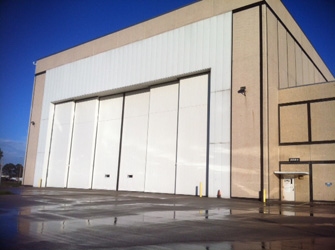
The full-size model of the ISS is in this big building and this is where astronauts do their training. It is part of the visitor’s tour so some people reading this may have seen it.
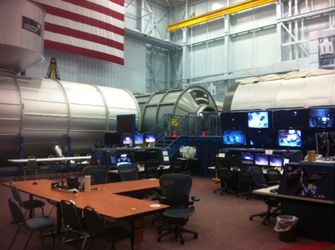
The instructors watch over our activities from this room. Japan’s Kibo is on the left.
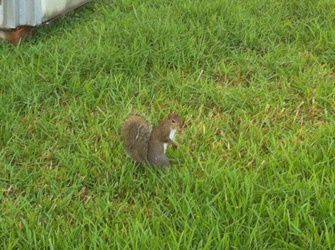
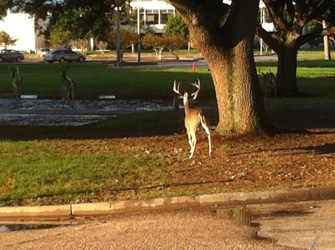
These photos are a bonus. There are a lot of animals at the JSC. The other day I saw a squirrel and a deer so I took photos of them. The deer ran away when I tried to get close to it (grin).
*Photos: JAXA


